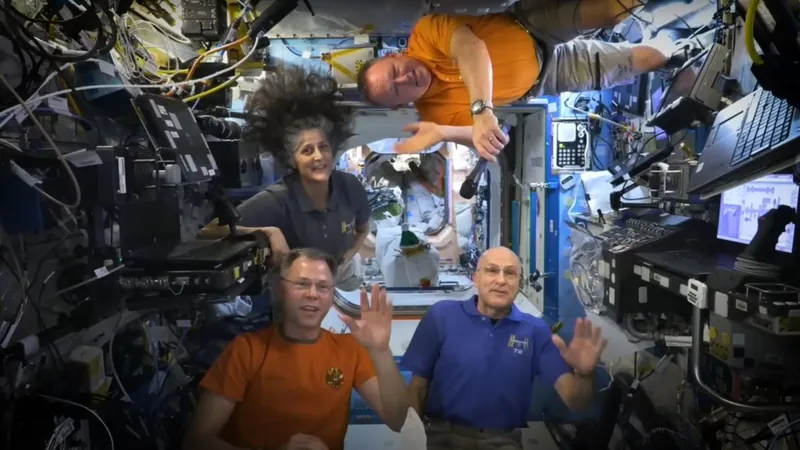
Revolutionary Research on the ISS: Unlocking the Secrets of Transport Phenomena in Space
2024-11-26
Author: Sarah
KENNEDY SPACE CENTER (FL), November 25, 2024
A groundbreaking paper published in the journal Gravitational and Space Research has revealed astonishing insights from research conducted in the International Space Station (ISS) National Laboratory, focusing on transport phenomena. These physical processes involve the movement of momentum, energy, and mass—essentially, understanding how heat and matter interact and redistribute in a microgravity environment.
Imagine how heat radiates from a stovetop or how a delightful aroma wafts through the air—these everyday experiences can be profoundly transformed in the weightlessness of space. The ISS provides a unique opportunity for researchers to explore these dynamics, which could lead to revolutionary advancements in fields such as pharmaceutical development and other commercial innovations.
Since the establishment of the partnership between the ISS National Laboratory and the U.S. National Science Foundation's (NSF) Chemical, Bioengineering, Environmental, and Transport Systems (CBET) Division in 2016, 43 projects have been supported, resulting in significant scientific discoveries. This collaboration has emphasized how vital partnerships can drive fundamental science forward, with 37 projects already utilizing the ISS as a platform for experimentation at the time of the paper's release.
Lead author Phillip Irace, the science program director for the ISS National Lab, stated, “This publication showcases how researchers at the ISS have harnessed microgravity to isolate and study essential physical phenomena that are often masked by the effects of gravity.” The impact of this research could be profound—particularly in areas like drug delivery, biosensing, and thermal management technologies—by enabling scientists to observe and manipulate small particles without sedimentation.
Among the highlighted experiments are investigations into spherical cool diffusion flames and fluid dynamics in microgravity. Co-author Shawn Stephens emphasized the importance of this work, saying, “These investigations are paving the way for advancements in combustion engine efficiency, energy production, and materials manufacturing.”
The potential applications of these findings extend beyond mere academic curiosity; they hold the promise of significantly enhancing industries and improving quality of life on Earth. The absence of gravity allows for unique insights that can’t be replicated in ground-based laboratories, providing a clearer understanding of fundamental scientific principles.
As the excitement surrounding this research continues to grow, Phillip Irace encourages those interested in the implications of this publication to reach out for further information. The ISS National Lab remains committed to fostering innovative scientific research that can reshape our understanding of the universe and improve human life.
Stay tuned, as these developments could spark the next big breakthrough in technology and health—leading us closer to a future where space exploration fuels everyday advancements!



 Brasil (PT)
Brasil (PT)
 Canada (EN)
Canada (EN)
 Chile (ES)
Chile (ES)
 España (ES)
España (ES)
 France (FR)
France (FR)
 Hong Kong (EN)
Hong Kong (EN)
 Italia (IT)
Italia (IT)
 日本 (JA)
日本 (JA)
 Magyarország (HU)
Magyarország (HU)
 Norge (NO)
Norge (NO)
 Polska (PL)
Polska (PL)
 Schweiz (DE)
Schweiz (DE)
 Singapore (EN)
Singapore (EN)
 Sverige (SV)
Sverige (SV)
 Suomi (FI)
Suomi (FI)
 Türkiye (TR)
Türkiye (TR)